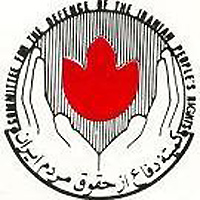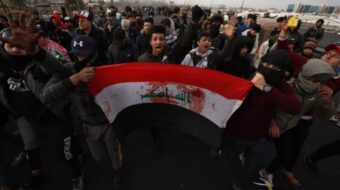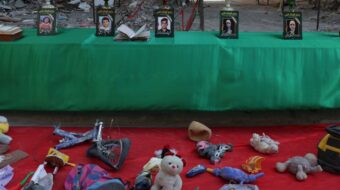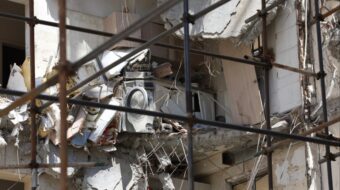
The death of reformist cleric Ayatollah Hossein Ali Montazeri on Dec. 19 has sparked a run of protests in Iran which have both caught the authorities off guard and surprised the opposition by their scale. Official reports suggest that the turnout at Montazeri’s funeral on Dec. 21 was up to 500,000 people. Opposition sources claim that the numbers were nearer to one million. Either way, this convergence upon Qom, a city with a population of only 700,000, is significant.
Montazeri had been one of the pillars of the 1979 revolution in Iran but fell out with Ayotollah Khomenei, whom he was designated to succeed, over the Islamic Republic’s human rights record and specifically the mass execution of political prisoners in 1988. Montazeri questioned the legality and necessity of the execution of political prisoners. Montazeri was put under house arrest in1997 for criticising the current Supreme Leader, Ayotollah Ali Khamenei. Earlier this year he made clear his opposition to the manipulated outcome of the June 2009 election, which returned Mahmoud Ahmadinejad to the presidency by a “landslide” and sparked the current wave of nationwide protests in Iran.
In this context, the death of Montazeri has helped to re-ignite an already volatile situation. On key occasions since the June elections the Iranian people have taken to the streets to demonstrate their opposition to the regime. These have included the ceremony to swear in President Ahmadinejad on Aug. 5; Quds Day on Sept. 18; the Nov. 4 anniversary of the U.S. Embassy occupation; and, most recently, Students Day on Dec. 7.
The protests on Dec. 7 included students waving Iranian flags without the Islamic Republic’s emblem and burning posters of Ayotollah Ali Khamenei. Security forces used tear gas and rubber bullets to disperse the protests and attempted to suppress news of the events by sealing off universities, blocking Internet and mobile phone communications. In spite of these measures images of the protests reached Western media and showed widespread violence against protesters.
Even without the death of Montazeri further flashpoints were inevitable. The 27th of December is the festival of Ashura, the most important day in the Shia calendar, and the opposition once again took to the streets. The resulting clashes were the bloodiest yet with the security forces firing live ammunition at protesters. Latest estimates suggest that up to 15 people are reported dead, including Ali Mousavi, the nephew of reformist movement leader Mir Hossein Mousavi. YouTube footage showed police motorcycles burning in the streets, crowds freeing protesters from the Basiji militia and police being stripped of their uniforms and weapons.
The events of Dec. 27 may yet be significant for three further reasons. Firstly, the unprecedented use of force by the security services undermines the claims of the state to be upholding Iran’s religious traditions. The festival of Ashura commemorates Imam Hossein, grandson of the Prophet Mohammad and regarded as a martyr in the fight against oppression. Secondly, unlike in previous demonstrations where many protesters covered their faces, images from Dec. 27 show many people with their faces exposed, indicating a growing level of defiance on the part of the opposition. Thirdly, reports suggest that some members of the security forces refused to obey orders when asked to fire on protesters.
If true, this final point is perhaps the most significant, as the identification of the security and armed forces with the cause of the people would signify a major shift in the balance of power. While it may be too early to proclaim such a shift in the power balance in Iran, the fact that protests have not subsided following the June election and that they have increasingly focused upon the authority of Ayotollah Ali Khamenei will give the authorities cause for concern. Such a shift begins to raise questions about the legitimacy of the Islamic Republic itself, not just the government.
How this balance changes will be the critical factor in determining the fate of Iran into 2010 and in particular the fate of the Islamic Republic. The ongoing response of the Iranian people to continued repression should be matched by an equal level of solidarity in the labor, trade union and peace movements across the world to ensure that Iran moves in the direction of genuine democracy. With the hovering threats of both Israel and the United States casting their shadow, it is vital that regime change in Iran is by the people, for the people and not imposed by external forces to meet an external Western agenda. Moving into 2010, this will be the main task of those across the world looking to support the true voices and the actions of the Iranian people.
Jane Green is the national campaign officer of the UK-based CODIR, Committee for the Defence of the Iranian People’s Rights.
Photo: The funeral of Ayatollah Montazeri in Tehran, Dec. 21. http://www.flickr.com/photos/hamed/ / CC BY 2.0










